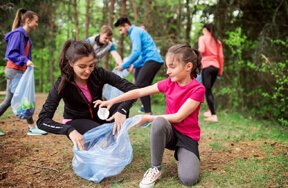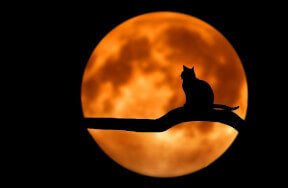We know that all-too-many animals are on the endangered species list – meaning there are very few of them left in the wild. We also usually understand that it’s somehow the fault of human beings when an animal becomes endangered. Maybe if we knew exactly how and why certain animals have become endangered, we will be able to prevent more animals from ending up on the list.
Reptiles
Reptiles include crocodiles, alligators and snakes. 10 million of these creatures are killed every year so that human beings can use their skin to make fashion accessories like shoes, belts, wallets, purses and luggage.
Each year, the sale of reptile skin is worth about $425 million.
Orangutans
Orangutans are primates that live in rainforests. These important forests are being cut down at an alarmingly fast rate by human beings. Rainforest trees are used for wood and the space that’s cleared is often used for farming to grow food for human beings. In this way, orangutans throughout the world are quickly losing their homes – and their lives.
Of the number of orangutans that were counted alive in the wild in the year 1900, only 10% are left.
Whales
For centuries (that means 100s and 100s of years) whales have been hunted for their blubber, oils and meat. Because of human beings killing them, some types of whales have been hunted to the very edge of extinction.
In the last 100 years, the total whale population – that means all species included – has dropped by 1.5 million.
Giant pandas
Gentle, beautiful giant panda bears are rarely seen in the wild anymore. Because of rapid human population growth and farming activities, there are only about 600 of these bears left in their natural wild habitat.
More than half of pandas’ bamboo forests – which they really on for food and life – have completely disappeared since 1974.
Tigers
These gorgeous striped cats are sometimes killed for their skin, but often are hunted so that their body parts can be used in traditional Chinese medicines – even though there is really no proof that these treatments actually work.
Koala bears
The eucalyptus forests where Koalas eat, play and live in Australia are disappearing fast. City growth on that continent has destroyed an astounding 80% of forests in only 200 years.
Rhinoceros
The horns of a rhinoceros are used in medicines in the Far East and are also highly prized as dagger (knife) handles in some Middle Eastern countries.
In fact, rhino horns can be worth more than twice their weight in real gold.
Loggerhead turtles
These beautiful turtles are losing their beach habitats and the eggs they lay in the sand are also being stolen.
In fact, 95% of all turtle eggs that are hatched are stolen – some by animals and some by people who cook and eat them.
What you can do to help
Adopt an animal at your local zoo, which will help pay for its upkeep. You can also adopt animals in the wild – just don’t expect to meet them face-to-face!
Be green! Reduce, reuse and recycle as much as possible to help protect the planet that we share with animals and all other living creatures.
Shop wisely. Don’t buy products or souvenirs that are made from animals parts like ivory, reptile skin or fur.
Find out more about organizations working to save animals like Greenpeace, World Conservation, World Wildlife Fund, etc.
Related Stories:































